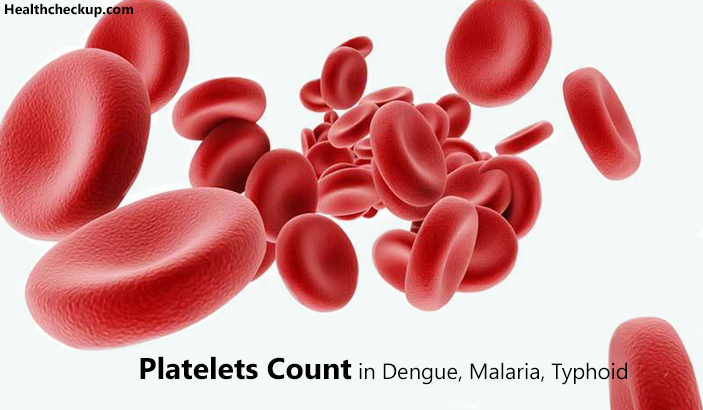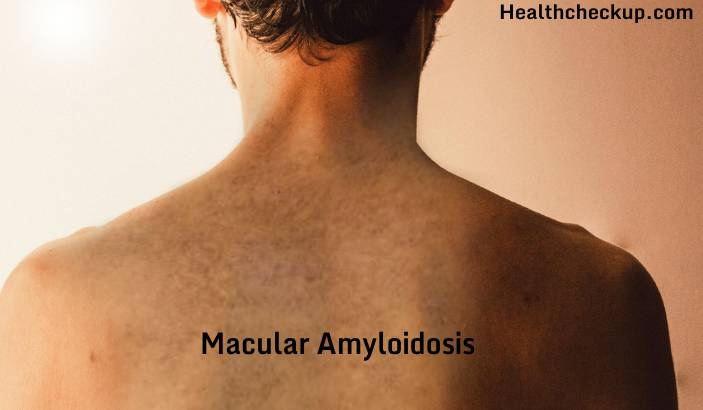Blood platelets count is a lab test that is conducted to measure the number of platelets present in the blood. The platelets are plate-shaped cells that are normally found circulating in the blood, and they are the first cells to respond to any damage in the blood vessels by binding to the site of the damage and forming blood clots. A platelets count test is used by doctors to get an insight into the health of a person suffering from conditions that affect effective clotting such as infections, bleeding disorders, and blood cancers.
A Platelets Count is Usually Ordered along with a Complete Blood Count Test by a Doctor when a Person Presents with any of the Following Symptoms:
- Recurrent nosebleeds
- Persistent bleeding from wounds, the gums, or the GI tract
- Conditions in which there is unexplained or easy bruising
- Women having heavy menstrual bleeding
- Petechiae or the presence of red spots on the skin
- Purpura or the presence of purple blood spots caused by bleeding under the skin
Blood Platelets Count Normal Range
The normal range for platelets count is considered to be 150,000 to 450,000 per microliter of blood.
When the blood platelets count is below 150,000, the platelet count is considered to be low, and the condition is referred to as thrombocytopenia. Thrombocytopenia occurs when:
- There is decreased blood platelet production in the body
- There is a massive destruction of platelets in the blood
- There is a destruction of platelets in the spleen or the liver
When the blood platelets count is above 450,000, the platelet count is said to be high, and this condition is called thrombocytosis or thrombocythemia. This condition may occur due to:
- Primary thrombocythemia where abnormal platelets are produced by the bone marrow in large numbers. If there are no evident blood disorders in a person, the condition may be referred to as Essential Thrombocythemia.
- Secondary thrombocythemia is a condition which occurs when an external factor causes high platelets count.
Blood Platelets Count in Dengue Fever
Clinical signs are usually enough to diagnose dengue. Persons with dengue usually present with high fever with no signs of any localizing infection, a petechial rash, and thrombocytopenia with relative leukopenia. Leukopenia is the decrease in the number of white cells in the blood. Dengue is usually suspected when the platelet counts fall below 10,000 platelets per microliter of blood.
The Typical Symptoms of Dengue which the Patients Present with Include:
- Very high fever which does not subside
- Nausea and vomiting
- Headache
- Severe joint and muscular pain
- Pain behind the eyes
These symptoms usually develop after 4 to 7 days after the patient has acquired the infection, and the fever usually lasts for 5 to7 days followed by a prolonged period of fatigue, joint pains, body pain, and/or rashes.
The thrombocytopenia in dengue is caused by the suppression of the platelet producing ability of the bone marrow, the damage of platelets by blood cells affected by the dengue virus, and the destruction of platelets by the antibodies produced by the body during a dengue infection.
Blood Platelets Count in Malaria
There are two types of malaria depending on the species of the parasite causing the infection, and they are Plasmodium vivax and Plasmodium falciparum. Thrombocytopenia is one of the most common complications of both types of malarial infections, and a platelets count below 150,000per microliter of blood is indicative of malaria.
Malaria usually occurs in persons bitten by a mosquito infected with the Plasmodium parasite.
The Usual Symptoms of Malaria Include:
- High fever with chills
- Profuse Sweating
- Headache
- Nausea and vomiting
- Diarrhea
- Abdominal pain
- Muscle pain
- Anemia
- Convulsions
- Coma
- Bloody Stools
The thrombocytopenia in malaria is said to be caused by coagulation disturbances, splenomegaly, alterations in the bone marrow, platelet destruction mediated by antibodies, and oxidative stress.
Blood Platelets Count in Chikungunya
Chickungunya is not rare now. It is common viral infection caused by an alpha virus that is spread by the bite of mosquitoes belonging to the genus, Aedes, which are Aedes Aegypti and Aedes Albopicticus. It is characterized by platelet counts lower than 150,000 platelets per microliter of blood.
The symptoms of chikungunya appear after 2 to 12 days after the mosquito bite and they are similar to those of dengue. Sometimes dengue and chikungunya may occur together. The symptoms of the infection include:
- High fever which is greater than 102 degrees Fahrenheit
- Intense pain in the joints such as the ankles and wrists that is symmetrical, and can last for several weeks
- Swelling in the joints of the extremities which become swollen and are usually painful to the touch
- A rash may sometimes occur
- Hemorrhage is a rare occurrence, but most patients recover within 3 to 5 days
- The joint pains may sometimes last for several months after the patient has recovered from the infection
The diagnosis of chikungunya involves a number of blood tests to detect the presence of chikungunya virus or antibodies. The serum and plasma are checked for thechikungunya virus, a virus-specific immunoglobulin (Ig) M, and neutralising antibodies. In addition, a complete blood count test and platelets count are also done.
Blood Platelets Count in Typhoid
Typhoid fever is a bacterial infection caused by the bacteria Salmonella typhi (S typhi), which usually causes diarrhea and rash. The bacteria S Typhi usually spreads through the consumption of contaminated food, drink, or water.
The most common symptoms of typhoid include fever, malaise, and abdominal pain. Sometimes the fever can be higher than 103°F and the diarrhea can get worse. The other symptoms include:
- Chills
- Nosebleeds
- Bloody stools
- Confusion, irritation, or delirium
- Severe fatigue
- Feeling of weakness
- Small red spots that appear on the abdomen and chest known as “rose spots”
The common diagnostic tests include a complete blood count (CBC) which shows an increase in White Blood Cells (WBCs). The platelets count usually shows a fall in the platelets levels below 10,000 per microliter of blood.
A blood culture done during the first week of the infection may reveal the bacteria S typhi. Additionally, a stool test may be done, and an ELISA blood test may be ordered by the doctor to look for antibodies to the S typhi bacteria.
Platelets Count in Pregnancy
Thrombocytopenia or low platelets count is the second most common blood disorder found in women during pregnancy after anemia. About 7 to 10% of pregnant women suffer from thrombocytopenia. It is usually common for the platelets to undergo many physiological changes in pregnant women, but severe pathological changes can cause thrombocytopenia.
A normal platelet count is considered to be 150,000 to 450,000 per microliter of blood. A drop in the platelets count below 150,000 or a platelets count below the 2.5th percentile for pregnant patients i.e. approximately 116,000 platelets/ microliter is known as thrombocytopenia.
The Physiologic Decrease in Platelets Count in Pregnant Women is Usually caused by:
- Hemodilution, which is a decrease in the concentration of the blood
- Increased platelet consumption within the body
- Increased platelet aggregation caused by high levels of thromboxane a2, a prostacyclin type hormone released by activated platelets
Also, pregnant women bearing twins will exhibit higher levels of thrombocytopenia as compared to those bearing a single child.
Platelets Count in Elderly
Thrombocytopenia usually occurs when blood platelets die faster than they are reproduced in the body. A low platelets count is usually seen in the elderly due to arthritis, a malfunction of the immune system, or due to chemotherapy. The common symptoms that may be a sign of low platelets count in the elderly include:
- Increased bleeding caused by small cuts
- Internal bleeding that can be caused by a very minor injury, and could appear as blood in the urine
- Excessive bruising which is usually the first sign of low platelets count
- Tiny red dots that form under the skin called petechiae are also the signs of low platelets count in the elderly
The normal platelets count is the same in the elderly as for those of younger ages, and any blood platelets count below 150,000 per microliter of blood is considered to be thrombocytopenia.
Medically Reviewed By

I am an experienced Medical/Scientific writer with a passion for helping people live a happy healthy life. My thirst for writing has followed me throughout the years – it is there when I wake up, lingering at the edges of my consciousness during the day, and teases me at night as I go to sleep.









